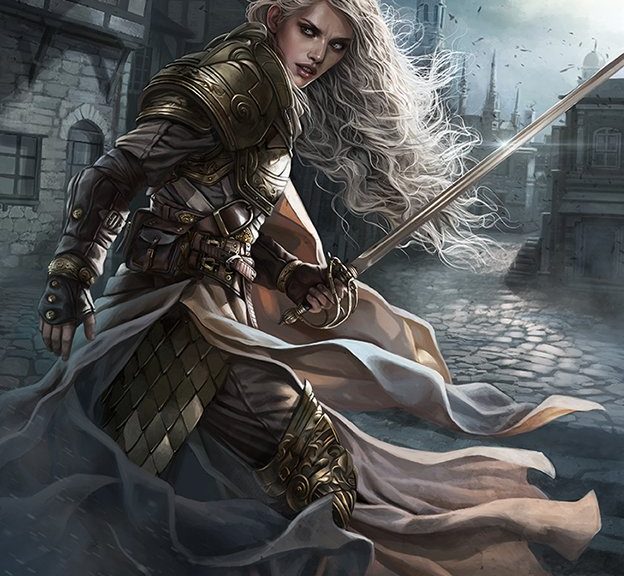One of the things that I haven’t consciously thought about in a while is the range of information sources available to me.
I’ve got a bunch of bookmarks filed away for Magic and I want to share them with you. Not all of them are price-related, but when I’m writing or thinking or getting ready for a podcast, these are valuable resources.
This is not intended to be a comprehensive list, but instead represents what I use most. These give me current information from a range of angles, and I combine that with my experience playing and collecting Magic cards to help me make financial decisions.
I try to share my experience, but I also want to share my sources of information.
Mtgprice.com
Well, let’s start with the best. We aggregate prices, keep track of spikes and craters, offer fantastic collection management tools, but there’s some sneaky-good stuff you might not notice.
For instance, if you use us on mobile while trading, the price is in the title of the page, so if you look at your history you’ll see every card you looked up.
Also, we have the easiest screen for comparing prices of different versions. Lots of places are going to make you click once or twice more, whereas we just give it all to you. You’re welcome.
Tcgplayer
Since TCGplayer switched over to letting individuals sell cards, it’s different than it once was. Instead of being an aggregator, it’s like a reverse eBay, where people list their lowest acceptable prices.
One of the things TCG is good for is seeing how many copies are left to be easily accessible. A low supply means it’s easier to move the price, especially when it comes to high-end or collectible cards
Speaking of prices: if stock is super low, it just takes one or two people to move the TCG mid price significantly. For example, foils of Steamflogger Boss. There’s two for $6, one for $30, and then six for about $100. So the TCG mid is listed at $99.99.
Other writers have gone into a lot more detail about why TCG mid shouldn’t be your default value, so be aware of its limitations.
eBay
I like looking at the completed sales in eBay to get another price point. For the example of Steamflogger Boss, there’s only two completed sales, one for $50 and one for $25 in the last month.
So yeah, that $100 price is a myth. Always good to check!
eBay is also one of the main resources I use when trying to price rare or foreign foils. Prices on these can vary widely, and while I’ve looked at international sellers (Hareuya, MCM.eu and such) there’s only so many hoops I’m willing to jump through.
Mtgstocks
This is more than just a compilation of prices going up and down. It’s also very useful for organizing tournament results and article mentions as a factor of spikes. It’s a delight to see that when one deck does well, which cards spike? Which cards is it often played with?
Mtgstocks suffers from TCG manipulation as well, though. (Which is why our ProTrader emails also keep track of supply changes, not just price changes.)
Magiccards.info
Honestly, I’ve had this site bookmarked for years upon years. Not so much for price information, but more for the most helpful search tools around. I don’t remember cards names all the time, and this offers me the best methods for narrowing down the card I’m thinking of.
Also of particular help is that on here, there’s a special color and line for when cards are banned, restricted, or on the dreaded Reserve List. I really hate having to jump to those pages separately, and having it all in one view is incredibly easy.
Mtggoldfish
There’s a delightful amalgamation of information here, from cards to tournament results to articles that mention the cards. This is also one of the better sites for tracking MTGO prices, though I’m not keeping up with that metagame.
EDHREC
Jason Alt refers to this database constantly, and he’s right to do so. This is an easy way to quantify what is and is not a staple, and what cards are most frequently played with other cards.
I personally don’t agree with the philosophy of optimizing a Commander deck. I would rather figure things out piece by piece than have someone spit out a fully combined decklist for me to copy. But to each their own.
If you play around with the Analyze Deck function, you’ll notice trends that tend to lead you to combo-oriented decks. EDHREC is not a resource for innovation, but instead points you to the (usually) degenerate stuff people build. Using this will lead you down that path, so tread carefully.
Did I miss some of your favorite sites? Are you someone who values a different perspective? Please, share in the comments or on the forums.

To EDHRec’s credit, more can be deduced from the “x percentage of decklists utilize this card” function rather than emulating a lone deck. I wholeheartedly agree that EDH decks should have personal flavor thrown in, and EDHrec allows for that since most competent magic players will look at some of the most used cards for those commanders and gag.
Bookmarked!